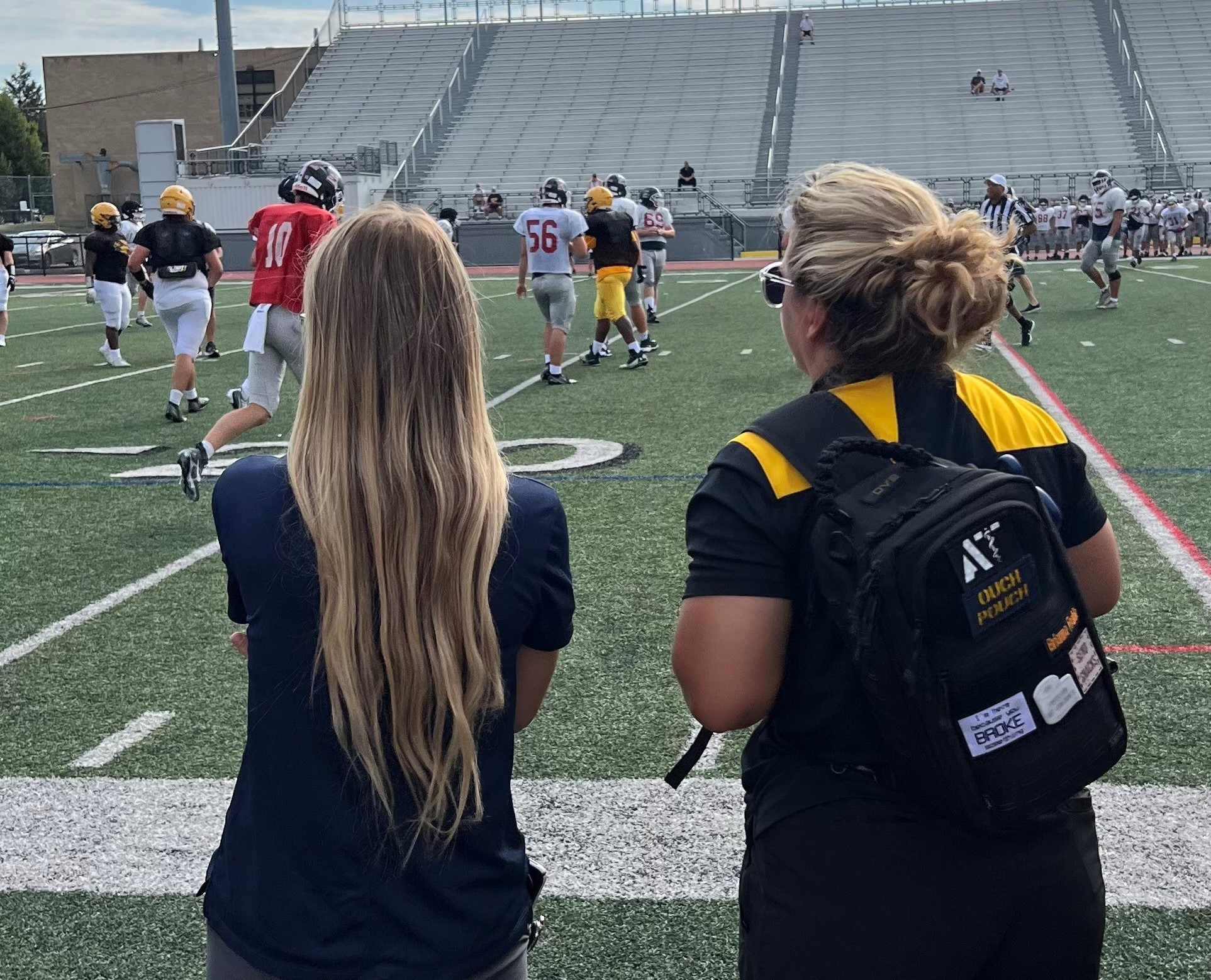Youth Sports Emergency Action Plans: Ensuring Safety in Critical Moments
August 28, 2024

St. Luke's athletic trainers have an Emergency Action Plan in place for every training session and game.
National news is reporting that at least three student athlete football players have died on the field in the past month due to an unknown condition or catastrophic injury.
Youth sports offer countless benefits, from physical fitness to the development of teamwork and leadership skills. However, the dynamic nature of sports also presents the risk of emergencies, such as sudden injuries, exacerbation of pre-existing known or unknown medical conditions or environmental hazards. In these critical moments, having a well-prepared and practiced Emergency Action Plan (EAP) is essential to ensure the safety and well-being of young athletes.
“The National Athletic Trainer’s Association recently published a position statement on emergency action plan development and implementation in sport, updating current best practices from an original publication in 2002,” noted Brian Wiese, St. Luke’s Sports Medicine program manager.
St. Luke’s Sports Medicine is the largest provider of sports medicine services throughout northeastern Pennsylvania, offering the most comprehensive and advanced treatment for athletic injuries. Caring for thousands of student athletes at dozens of schools throughout the region, St. Luke’s Sports Medicine is the official medical provider of the Pennsylvania Interscholastic Athletic Association (PIAA) State Championships, the official sports medicine provider for District XI, the official sports medicine provider for the Lehigh Valley Youth Phantoms and a partner of the National Football Foundation (NFF).
“Emergency action planning often falls on the shoulders of an athletic trainer,” Wiese said. “However, to gain widespread utilization and implementation, we must start to get acceptance, engagement and adoption from organizational leadership. We need all stakeholders to become vested and involved for there to be true success with implementation.”
An Emergency Action Plan (EAP) is a detailed, systematic protocol designed to guide coaches, staff and volunteers in responding effectively to emergencies. Whether it’s a serious injury, a medical condition like an asthma attack or an environmental threat such as extreme weather, an EAP outlines the steps to be taken to provide immediate care, manage the situation, and ensure the safety of all participants.
EAPs are not one-size-fits-all; they must be tailored to the specific needs of the sport, the age and ability levels of the athletes, the facilities being used, and the potential risks associated with the activity. An effective EAP is comprehensive, regularly updated and practiced by all relevant personnel.
Key components of a youth sports EAP include:
Clear Roles and Responsibilities
The EAP should also outline how to communicate with the athletes themselves, providing reassurance and instructions while keeping them calm and safe. In the case of a large-scale emergency, such as a natural disaster, communication protocols should extend to coordinating with local authorities.
Emergency Equipment and Supplies
Having the right equipment on hand can make all the difference in an emergency. An EAP should specify the location and contents of first aid kits, automated external defibrillators (AEDs), and any sport-specific safety gear, such as splints or ice packs. Coaches and staff should be trained in the use of this equipment, and it should be regularly checked to ensure it is in good working order.
An EAP is only effective if it is practiced regularly and reviewed frequently. Coaches, staff and volunteers should participate in drills that simulate different emergency scenarios, allowing them to become familiar with their roles and the procedures. Regular reviews of the EAP ensure that it remains up to date with any changes in personnel, facilities, or equipment.
“Developing and implementing emergency action plans have no cost barriers, it just requires the time, attention, and a little hard work from a collaborative group of stakeholders,” says Wiese. “We often hear about money and budgets being a limiting factor to purchasing or implementing an initiative to better prepare for the worst-case scenario, but this is simply not the case with emergency action planning.
Youth sports emergency action plans are critical for ensuring the safety and well-being of young athletes. By clearly defining roles, establishing communication protocols, ensuring the availability of emergency equipment, and accounting for venue-specific considerations, an EAP provides a structured and effective response to emergencies. Regular practice and review of the EAP are essential to ensure that all involved are prepared to act swiftly and confidently in critical situations. By prioritizing safety through comprehensive EAPs, we can protect our young athletes and allow them to enjoy the benefits of sports with peace of mind.
Latest News


April 10, 2025
National Recognition for SLUHN Graduate Medical Education

April 09, 2025
In Safe Hands Award

April 08, 2025